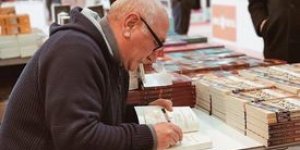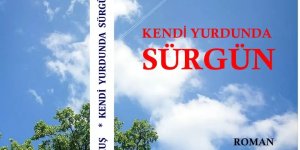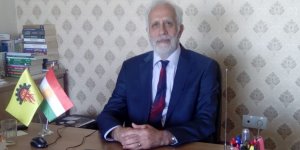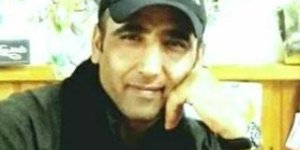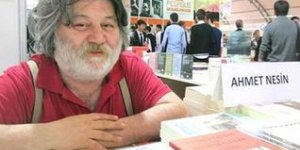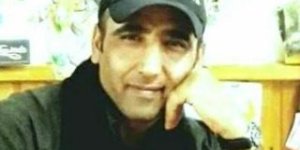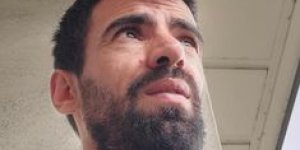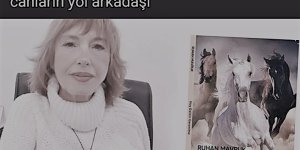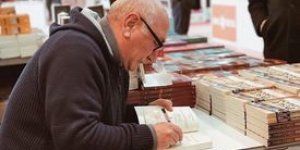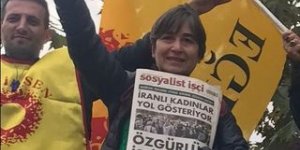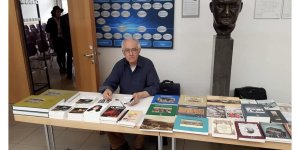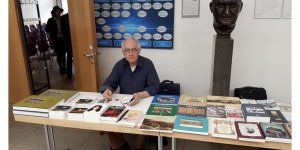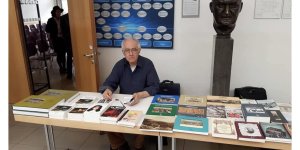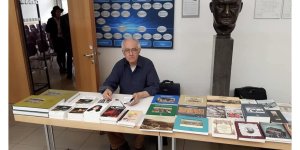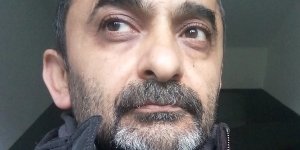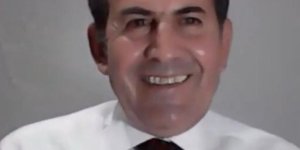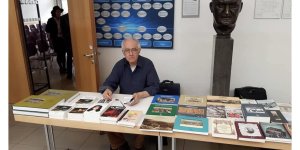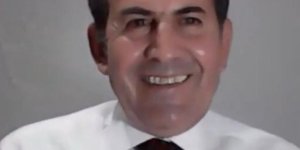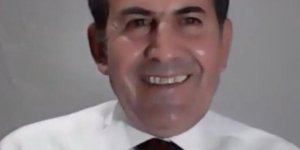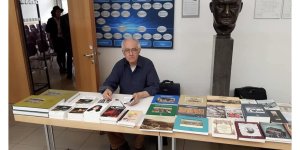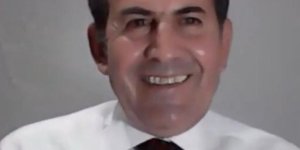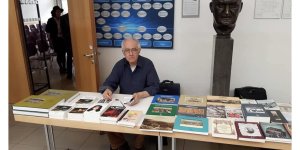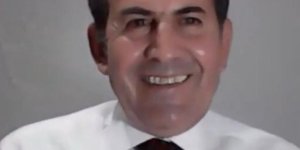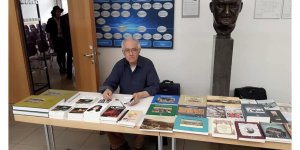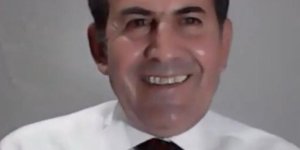Ruhan Mavruk wrote about the book of our author Süleyman Kuş
Poet, writer, human rights defender--activist Ruhan Mavruk, Our author wrote about Süleyman Kuş's book exile in one's own land or “Every Winter You Endure Makes The Night Shorter” Ruhan Mavruk Süleyman Kuş's 'Exile in His Own Homeland', published by Ubuntu Publications last summer When I received his book titled "I had many memories of the recent past, along with many memories of many years and roads. I also met again with the warm voice of an art worker who has not lost his essence throughout. In 1997, he prepared the poetry and music program Dağ Gölleri on Çevre Radio. I was presenting. Occasionally, letters signed by Hüseyin Selvi and poems in the letters would arrive. from construction sites to us. He was one of the most loyal listeners of the programme, so much so that he He wrote that he sometimes climbed to higher places to watch the broadcast. Letters are many It was sincere, the sentences were very cold, and the poems were full of longing and resistance. Much later his own 2005 Istanbul bookstore with her unofficial book "Human Faced Violet", which she published with her own resources. We were able to meet at the fair. From the Prison Inside, Outside, to Ours, published by Soru Publications. We took part in the Poetry Anthology. In 2006, he published his second poetry book "Kuytuda ve Ember" and his short story book in 2008. He published his book "Ulaşları of the Suburbs" and also his articles in various magazines under different pseudonyms. I saw what you wrote over time. Here is this friend who lived a long internal exile under various pseudonyms, He is able to publish his fourth book abroad and under his own name for the first time. The young revolutionary who started in 1987 and tried to bring to account 12 March and 12 September Like many first novels, focusing on the rise of the opposition and the dark years of the '90s, This is a book with autobiographical elements. The author used three different narrative techniques intertwined. Normally, it would not be surprising if this created a difficulty for the reader. But reveal yourself A text that flows naturally and continues with the flavor of language and poetry has emerged. This with subheadings Fluency and easy readability have been further reinforced. Beginning with the classic third person narrative The novel occasionally turns to first person narrative in an effort to write the experiences of the main character. is transforming. Sometimes, the hero has diaries, some of which are lost and some are hidden left and right. One of its leaves falls in front of us. Aside from the social struggle processes in which it takes place, this is undoubtedly a poet's novel! in the book Some sections are already texts approaching poetic expression on their own. especially childhood period, the Maraş and Sivas-Madımak Massacres, or sometimes having to stay overnight Sections about the cemeteries where he stayed. The projections of his childhood in the 1970s and his early youth dating back to the early years of 1980. Sometimes he tells it from the perspective of a folk storyteller, sometimes from a child's perspective. On the other hand, from '87 Thousands of "unknown" and "missing" perpetrators of the democratic-revolutionary struggle dating back to '98, Resistance and dissolution, inner exile and loneliness, surrender despite all the negativities not being able to somehow reproduce oneself economically, culturally and politically He delicately narrates the sad, funny and sometimes poetic scenes of the war. Through Kenan, the main character of the book, the author presents images of old Adana, its people, the neighborhood's madmen, daily life, summer cinemas, horse carriages It brings back many memories, such as movie announcements, with extraordinary vividness, often making people smile, While narrating sometimes with saddening scenes, "Orphans", written by the child Kenan in 1978, is interjected. He does not forget to include a mini story called. In fact, the triple narrative technique he uses is It makes it easier. Again, from the perspective of an eleven-year-old boy writing a diary, the injustices reflected in life, and the revolutionary young people, including some of their relatives, It brings together the struggles and disappointments, but also the beauty of dreaming. us. For example, the middle school principal will not allow those who come to school wearing clothes other than a suit. When we say that he will not be accepted, our poor student makes childish statements of rebellion... The author sometimes takes the reader through a union that takes place in 1958 through side characters. to the story, again through the character of Kenan and other people around him, in 1970, It takes us back to the 80s and 90s and some of the experiences of that period. This series of short images creates interesting and critical paintings by weaving memory patterns between the past and the present; -most First of all, by being critical of yourself... The main character of the book is about the construction and construction work he had to enter as a "paperless", wanted citizen. not only does he experience and reflect the situation of the working class in construction site environments, but also He also had a social and historical influence on the literary and artistic environments where he casually entered and observed their situation. He looks through the window of reality. With highly detailed descriptions of construction environments It literally brings the reality of nature, structure and people to life. Learning to play saz from the Kurdish people It's hard to forget the young worker İsmail after a few pages. While Kenan learns by living in such an environment, he also makes his life meaningful by learning and producing. He's trying to make it happen. Undoubtedly, the heavy social and political processes experienced have a significant impact on culture and It is reflected in art at various levels. cultural crisis petty bourgeoisie The contradictions of a poet who came from the revolutionary youth struggle with "revolutionary" artists and became a worker It is laid out before us, albeit briefly. Unfortunately, these chapters are based on a specific context and are short. afflicted. Otherwise, a period of history extending from 1958 to 1998 was discussed through this family and their circle. If it had been included, it would have been a large work that could span several volumes. Yet even in this state I must note that I am with an inspiring book. I said, first of all, this is a poet's novel. As such, in some parts of the book You can also encounter poems, stories or diary pages. This is another part of the work original side. I would like to end with a poem from the book: " ERKENCİ I don't know how I will die But I'm early like a good friend Do leaden reds appear on the skin? The night commemorates extrajudicial executions or in a deserted, out-of-the-way place Is the tortured body covered secretly? mixing with the noble melodies of mothers... I didn't keep silent, I didn't surrender because My roots are in the soil, even if my trunk is cut neither homesickness, nor deprivation, nor illness nor your squinting eyes What really killed me was lack of love, my beloved My hunger becomes a waterfall for all longings... I'm joining the human flood of Istanbul We swing hammers, we break concrete, we make mortar I look at the horizons of hope I enter their construction sites, tea houses, factories I keep adding the near and far What really killed me was despair, my beloved... One hand goes to Eluard, the other goes to Gökçe. One is in the mountains of Sivas, at a Mediterranean wedding And wherever man has cultivated beauty, The heart is attentive, the mind is alert Lack of books would really kill me, my beloved. This is why I hug you, to the growing resistance..."


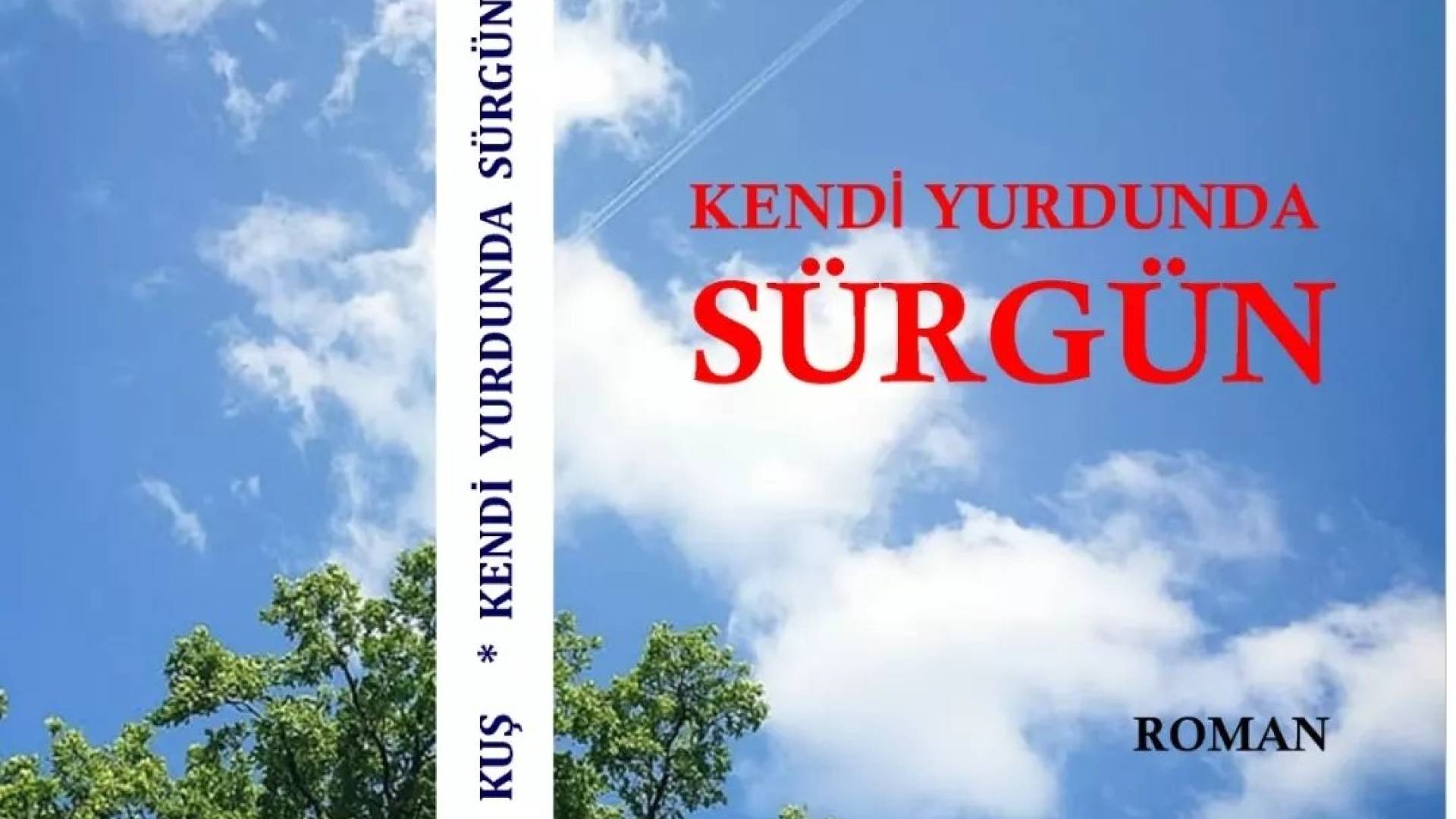
 Türkçe
Türkçe 